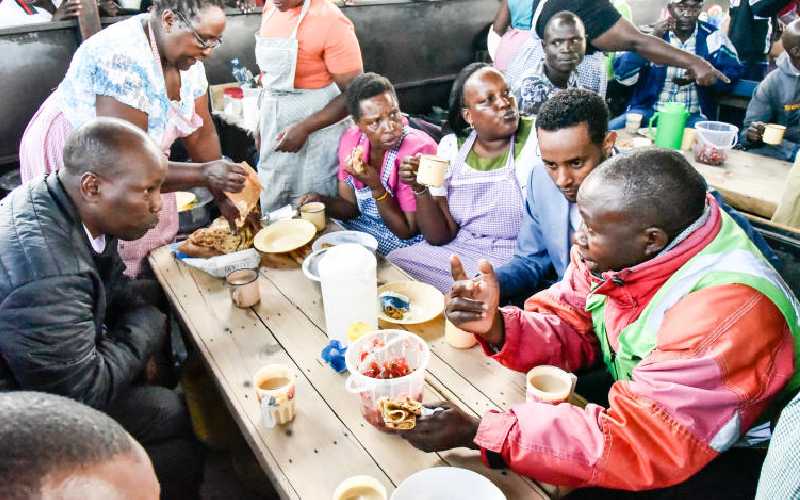×
The Standard e-Paper
Home To Bold Columnists

Nakuru Governor Lee kinyanjui accompanied by his deputy Dr Erick Korir take breakfast at one of the Food Kiosks within Nakuru town on January 22, 2020.[Kipsang Joseph,Standard]
In my last article, I introduced Moraa, a skilled mechanic and owner of a small garage in Nairobi West. Like many Entrepreneurs, Moraa is facing challenges worsened by Covid-19.